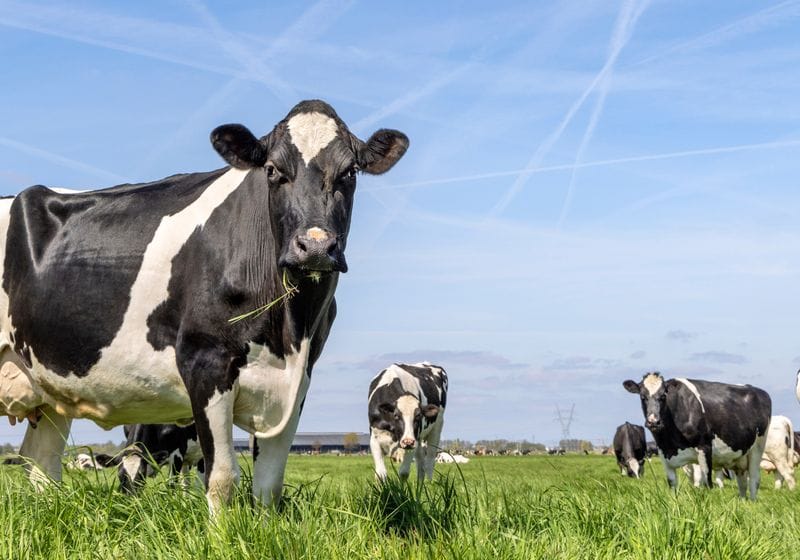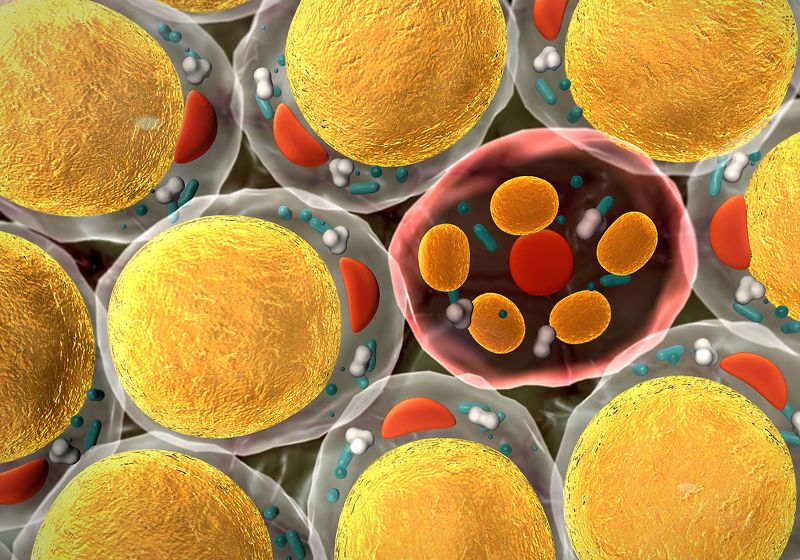Inside a Cow’s Stomach: The Microbial Magic Behind Milk

Researchers study how microbes move around the farm and their influence on milk production and efficiency in cows.
It all starts with a cow. These gentle, grass-chewing giants are the foundation of an entire food system built on milk. When a dairy cow becomes pregnant around one year of age, she begins a biological journey that fuels one of the most diverse categories in people’s diets. After a nine-month gestation period, she gives birth to a calf and begins producing milk. This lactation cycle typically lasts about a year and is central to dairy farming operations.
But cows aren’t the only vital players in this story, because microbes are just as essential. Dairy cows have a specialized organ called the rumen, which contains a vibrant community of microbes that help break down the cows’ feed of corn silage to soy to alfalfa. “What happens is the microbes, through the bacteria, will then physically attach, break down cellulose, hemi-celluloses, and ferment them into volatile fatty acids,” explained Garret moneya rumen microbiologist at the University of Wisconsin-Madison, during a session at the American Society of Microbiology Microbe 2025 meeting. These volatile fatty acids affect milk production and composition.
To meet the growing needs of consumers, farmers have primarily used breeding strategies to obtain larger cows that produce more milk or have altered the cows’ diet; however, milk quality is just as important as the quantity. “You want milk fat, you want milk sugars, and you want protein (in milk),” said Suen. However, he remarked that of these approaches, “the rumen microbiome has been largely ignored, even though people know that it is the big thing that drives most of this (production).”
Although many assumed that the rumen microbiome was indeed a driver of milk production, Suen noted that few have provided evidence of this. The rumen microbiome is challenging to study due to its anaerobic environment. However, technologies such as next-generation sequencing have helped researchers begin to characterize and understand the microbial diversity in the rumen. In 2017, Suen and his team found that there were distinct microbiomes between high- and low-efficiency dairy cows, but this list of microbes didn’t tell the researchers much else.1
To further explore this association, Suen and his team performed a classic transplant experiment by taking the rumen microbiome of a high-efficiency cow to give to a low-efficiency cow and vice versa.2 They did this using three pairs of cannulated cows, which have a surgically inserted port in their side that enables researchers to access the rumen and its contents. “What we did was we, by hand, stuck (a) hand into the rumen, and we basically grabbed contents and stuck it into a giant garbage pail. We did this for all six of these animals, and then we stuffed the (donor) rumen contents back into their associated pair.”
The researchers assessed the microbial communities in cows before a rumen content swap and over eight weeks, using 16S rRNA and amplicon sequencing to monitor changes. They observed that low-efficiency cows temporarily became high-efficiency about a week after receiving rumen content from high-efficiency donors, but they eventually reverted to their original, low-efficiency state. In contrast, high-efficiency cows that received rumen from low-efficiency counterparts lost their productivity and never regained it.
“This suggests that modifying the adult rumen microbiome is going to be rather challenging,” said Suen. “Because if these animals have the ability to kind of correct their microbiome even after wholesale changes at this level, that’s going to make significant changes really difficult.”
To overcome this, Suen and his team turned their focus to calves, aiming to influence milk production early in life by shaping the microbiome themselves. Since dairy calves are often separated from their mothers at birth and raised by humans, they are likely to acquire their gut microbes from the environment.3 The team collected rumen contents from adult cows and administered them to calves from birth to six weeks of age.4 Later, as adults, these cows were cannulated and their microbiomes sequenced. While clear differences were observed between the microbiomes of high- and low-efficiency cows, these changes did not result in any measurable improvements in milk production.
While Suen continues investigating the factors that influence microbial movement across farms, he and his team have adopted less labor-intensive methods for sampling the rumen.5 One recent approach involves using oral swabs, which can detect up to 70 percent of the rumen microbiome. Compared to traditional sampling techniques, the researchers found that oral swabs successfully mirrored the microbial associations observed previously. As Suen and other scientists delve deeper into how microbes influence productivity on dairy farms—for cows and other ruminant animals like goats and sheep—they’re also examining how farmers can meet the growing demand for milk in more sustainable ways.



